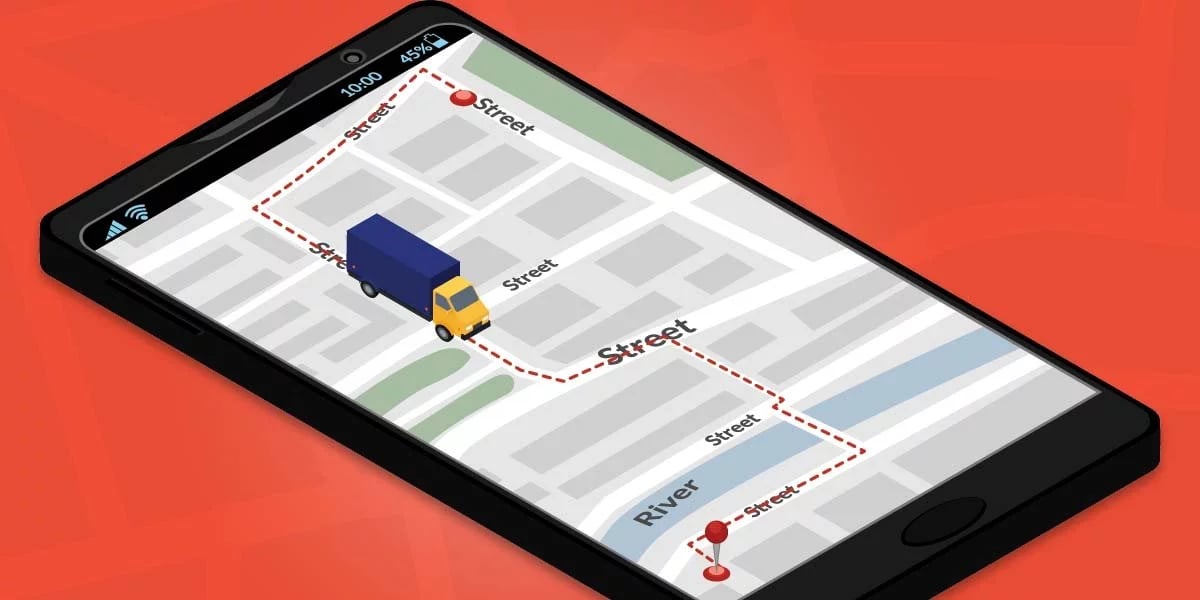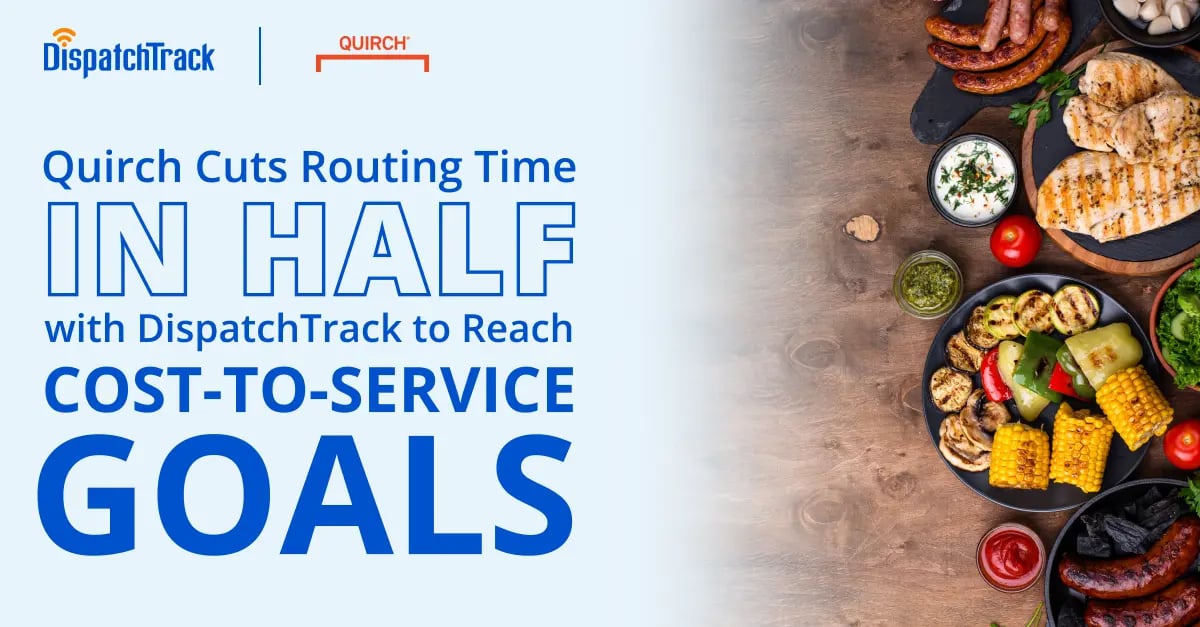In logistics, the useful life of a given data point can go by in the blink of an eye. Sure, some of the data you leverage in your day-to-day operations will be static over the course of weeks or months—but other pieces of information run the risk of being out of date by the time they’ve made it to your dashboard. 
This is a particularly acute problem in B2B delivery management. If it takes an hour for information about a delayed delivery to reach you in the back-office, it’s already too late to tell you the full story. If you had known right away, calling the customer might have made for a simple fix—but now there’s a whole thread to unravel with regards to what’s happened in the meantime, where the driver is, how you’re going to make it up to the customer, etc.
Even at the planning stage of your delivery process, data can go out of date remarkably quickly. Things like food distribution, beer wholesaling, broad line distribution, and other businesses that mostly work with recurring customers are actually some of the most dynamic businesses out there. Customer needs change rapidly, and your plans need to be able to reflect those changes without becoming inefficient or disorganized.
Simply put, real-time information is crucial to B2B delivery success in the modern era. The question is, how do you actually implement it?
Why Do B2B Deliveries Need Real-Time Information
Real-time information means different things for different people and different contexts. A territory planning specialist might think about real-time information as being the most up-to-date customer, driver, and delivery data that has to be integrated from other solutions before they can get started on crafting a workable plan—whereas for a customer service rep it’s going to mean live data about individual deliveries.
Why are these various kinds of real-time data so important? That depends on the data itself:
- Real-time ETA information as deliveries are underway enables you to spot delivery exceptions before they become issues and work to resolve the situations on the fly. For instance, if a particular delivery’s ETA has slipped out of the promised window and into the lunch rush, you can reroute and send a note to your customers.
- Live temperature reading and other telematics data can help you spot potential cold chain issues or other disruptions before problematic product reaches the customer’s loading dock.
- Up-to-the-minute delivery data (not just for “where’s my order” calls but for information on previous deliveries or potential last minute requests) gives customer service teams the ability to work with customers in real time to address any needs they may have and help them answer any questions. Rather than having to call the driver to get updates, reps can find the info they need on a single screen.
- Up-to-date data from elsewhere in your delivery technology stack helps you ensure that when you’re analyzing plans and making updates you’re actually working with the right information—potentially saving you from disruptions down the road.
 In each of these areas, speed of essence. The more quickly you can get the right information in front of the right person, the more effectively you can keep your operations running smoothly. By contrast, when someone has to manually dig up the information they need, there’s a real risk that by the time they find it, it won’t be the right data for the job anymore.
In each of these areas, speed of essence. The more quickly you can get the right information in front of the right person, the more effectively you can keep your operations running smoothly. By contrast, when someone has to manually dig up the information they need, there’s a real risk that by the time they find it, it won’t be the right data for the job anymore.
This challenge is particularly compounded in situations where the larger process of customer service is fragmented and disconnected. If sales, delivery, and merchandising all operate in their own functional silos, with different solutions being leveraged to plan and execute them, it’s much more difficult to understand your cost-to-serve at a holistic level, let alone provide consistently stellar service.
How Connectivity Powers Data Visibility Across the B2B Delivery Process
If you take one thing away from this article, let it be this: to power real-time information for your B2B last mile deliveries, you should start by prioritizing connectivity. What does that mean exactly? Well, it can mean a few different things:
- Connectivity between planning and execution: The best laid plans often go awry—which is even more true when you have a rift between how you plan and how you execute. Not only do you want to plan and execute deliveries within a single solution if possible, you also want to leverage that solution to gather real-time data as the deliveries are unfolding. By breaking down the silos between, say, territory planning, routing, and dispatching, you can make it much easier to roll out plans that are actually feasible and responsive to real-world conditions.
- Connectivity between the office and field: Part of gathering real-time information on deliveries as they unfold comes down to providing drivers and other delivery personnel with the tools they need to automatically send delivery data back to dispatchers. Here, a mobile app that enables status updates, two-way communication, and proof of delivery is crucial. When you have a steady stream of information into every truck, route, and delivery throughout each day, you can keep tabs on ETAs, spot exceptions, and ensure that everything is on track—or can be gotten back on track quickly.
- Connectivity between delivery, sales, and merchandising: Like we mentioned above, we see a disconnect between sales, delivery, and merchandising all too frequently—and that disconnect has a huge impact on your ability to understand your total delivery costs and provide stellar, integrated service to customers. When merchandisers don’t have visibility into when a particular pallet is going to reach the local Safeway, it’s hard for them to be there at the right time to do their jobs. If a salesperson doesn’t know about a late delivery until after the fact, it’s that much harder to do damage control. That’s why leveraging one solution that offers data visibility into all of these processes in real time can have such a big impact.
- Connectivity across the technology stack: Even if you’re able to handle multi-functional routing and visibility within one solution, you can’t achieve true real-time information in a meaningful way if your various other solutions don’t interact. Telematics integration is an obvious example here—if telematics data doesn’t flow into your delivery management platform, it’s hard to act on it in a timely way—but these kinds of information flows are broadly important for creating efficient B2B delivery operations.
How Does Data Availability Impact Your Bottom Line?
From the previous thousand words or so, you might have gotten the impression that creating true real-time visibility and information availability is a somewhat daunting task. We’re not going to pretend that change management processes are a walk in the park or that adding a new solution to your tech stack is something you can do in a matter of hours—but we are going to suggest that prioritizing data availability and velocity can yield ROI rapidly.
How does the kind of real-time information we’re describing directly impact your bottom line? There’s a whole host of ways:
- IT consolidation — when you have the right systems in place, you can achieve less spending on redundant solutions
- Planning efficiency — developing plans requires less time, resulting in time savings for planners and other office staff
- Customer retention — it costs more to find new customers than to retain the ones you already have, which is why investments in customer service are so crucial
- Reduced disruptions — late and failed deliveries can cost you in the short and long term, unless you have the data you need to head them off before they do
Big investments in IT and infrastructure can often feel hard to justify, but putting the tools in place to power real-time information can produce a measurable ROI in no time—you just have to make sure you’re leveraging the right tools, technologies, and processes.